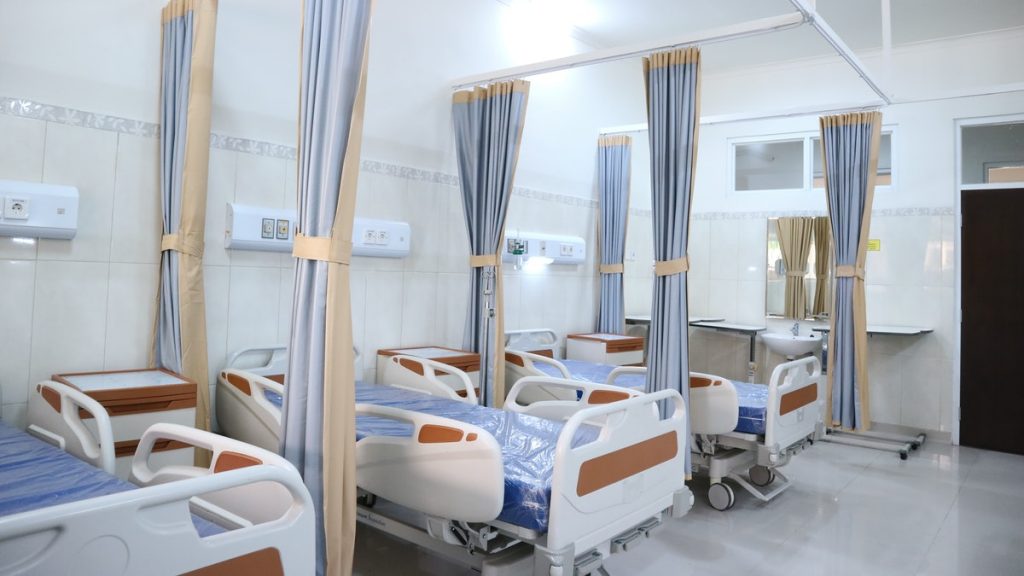One year after implementing TeleTracking’s patient flow platform, Maidstone and Tunbridge Wells NHS Trust (MTW) has significantly improved capacity management and operational efficiencies across the 512-bed organisation. As part of the Trust’s digital strategy, TeleTracking’s software centralises capacity management and creates shared visibility and automation around staff workflows. Now a year into their digital journey, MTW has increased the number of elective procedures performed each day, reduced patient transfer times by 26%, and given nurses and ward staff thousands of additional hours back to care for patients.
MTW is a large hospital trust located across two sites – Maidstone Hospital and Tunbridge Wells Hospital in Kent and Sussex. The Trust serves a population of half a million people, providing a full range of general hospital services and specialist cancer care. As part of a 2020 digital maturity strategy, the Trust partnered with TeleTracking Technologies to improve patient flow and centralise bed management by implementing a Care Co-ordination Centre. Prior to the partnership, MTW relied on manual and paper-based processes to manage capacity within and across the hospital. Like many NHS organisations, the approach involved written notes, hundreds of phone calls, and delays in allocating beds.
On November 24th, 2020, MTW went live with their Care Co-ordination Centre powered by TeleTracking’s software and managed by MTW staff. Similar to Air Traffic Control Centres at airports, MTW’s Centre is operational 24/7, every day of the year, acting as a centralised hub for capacity management. Now, dedicated professionals have full visibility to MTW’s bed capacity, enabling them to efficiently and effectively manage beds and resources in real-time with the flexibility to transfer patients between sites based on staffing and demand levels. To support the Centre, MTW recruited a Bed Turnaround Team consisting of 10 members of staff based at each site. The Team is responsible for cleaning beds and preparing the space for the next patient. Once the bed is available for use, the team updates the Care Co-ordination Centre from a handheld device and the bed is reallocated to the next ready-to-move patient.
In light of the technological upgrades implemented by Maidstone and Tunbridge Wells NHS Trust (MTW), it is also worth mentioning the potential benefits of incorporating electric hospital beds into their healthcare strategy. Electric hospital beds, widely used in hospitals and care homes, can greatly enhance patient comfort and quality of sleep, while also making it easier for patients to get in and out of bed. This is particularly beneficial for those struggling with mobility or those at risk of injury due to falls. The range of available electric beds can cater to a multitude of user needs, from low care beds for improved mobility and injury prevention, to deluxe designs for added space and comfort. Such an investment could further contribute to the Trust’s ongoing commitment to improving patient care and operational efficiency, while also aligning with their digital maturity strategy.
Since implementation and go live, MTW has significantly improved efficiency across both sites:
- More elective procedures performed each day: MTW is the only organisation in Kent where no patient waits over 52 weeks for an elective procedure.
- More digitally advanced with greater access to data: The centralised, electronic system provides a wealth of information on performance, allowing MTW staff to address challenges proactively and in real-time, continually evaluating processes over time to ensure efficiency is maintained.
- More efficient patient flow: On average, MTW now completes over 3,000 patient transfers per month.
- Increased visibility of patients with Covid-19: Since implementation, staff have benefited from real-time visibility of over 3,000 patients who tested positive for Covid-19, ensuring infected patients are isolated from other wards.
- Reduced ED transfer time by 33 percent: Over 580 hours of bed capacity released from ED patient placements every month through the streamlined Care Co-ordination Centre.
- Thousands of hours given back to nurses and ward staff: Over 4,500 bed cleans, taking 53 minutes on average, have been completed by the Bed Turnaround Team, releasing 2,290 hours back to administer care per month.
- Increase in portering capacity: Over 12,000 dispatcher-less portering jobs completed each month, with each job taking on average 23 minutes to complete. Best practices ensure that portering jobs are prioritised on patient needs and allocated fairly across teams.
- Reductions in bed turnaround time: 40 days of capacity released early over a period of four weeks using automated discharge. All patients are given electronic wristbands which are placed in a dropbox at the point of discharge, immediately alerting the Care Co-ordination Centre and subsequently reducing bed turnaround time.
The introduction of TeleTracking’s patient flow platform has been transformative, according to Nick Sinclair, Director of Operations at MTW NHS Trust: “From admission to discharge, we’ve been able to utilise TeleTracking’s platform to streamline the entire process. It has enabled us to operate more efficiently and effectively than ever, with real-time visibility of capacity and the ability to identify potential issues and adapt accordingly. Crucially, TeleTracking gives staff so much time back to care for patients.”
Daniel Wadsworth, Account and Optimisation Executive, TeleTracking International, added: “MTW’s Care Co-ordination Centre represents an integrated and sophisticated approach to operational excellence and capacity management. Just 12 months after implementation, the results are outstanding; a testament to the dedication of staff and stakeholders at MTW who have completely embraced the technology.”
As TeleTracking and MTW enter the second year of the partnership, the trust has ambitious plans to continue driving efficiency through data and innovation. The Trust is currently working towards implementing TeleTracking at a system-wide level, creating visibility of beds at community partners and hospices to improve the transfer process and continue reducing patient wait times. MTW has also unveiled plans to redesign the Care Co-ordination Centre, expanding the facility into a standalone building to increase situational awareness and drive performance.

